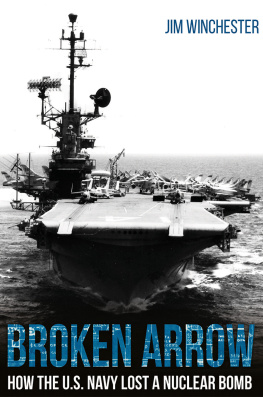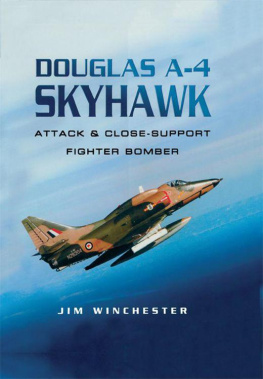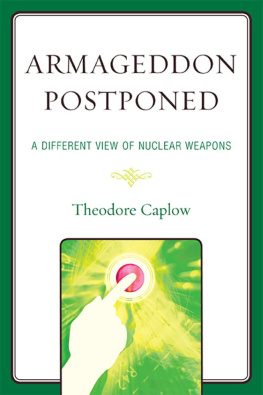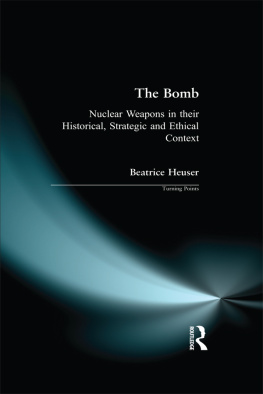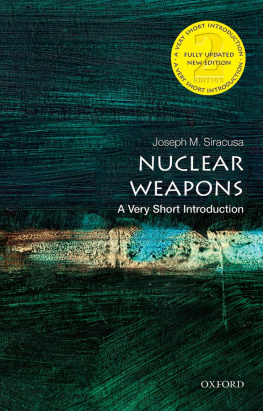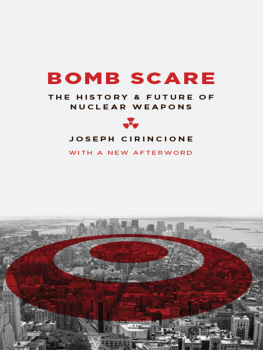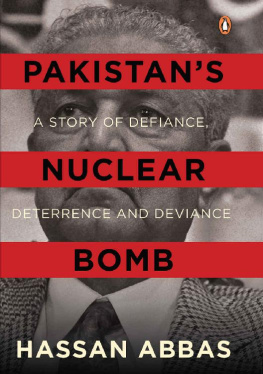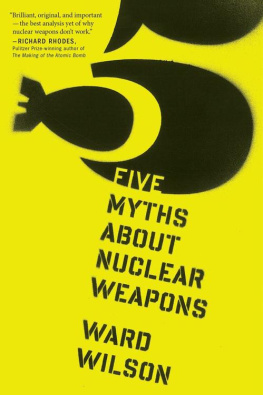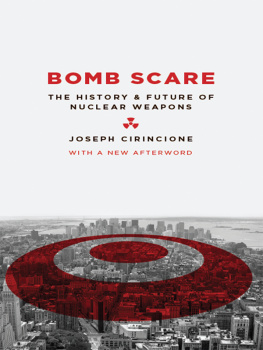Pagebreaks of the print version

BROKEN ARROW
BROKEN ARROW
How the U.S. Navy Lost a Nuclear Bomb
JIM WINCHESTER

Published in the United States of America and Great Britain in 2019 by
CASEMATE PUBLISHERS
1950 Lawrence Road, Havertown, PA 19083, USA
and
The Old Music Hall, 106108 Cowley Road, Oxford OX4 1JE, UK
Copyright 2019 Jim Winchester
Hardcover Edition: ISBN 978-1-61200-691-8
Digital Edition: ISBN 978-1-61200-692-5
Mobi ISBN 978-1-61200-692-5
A CIP record for this book is available from the British Library
All rights reserved. No part of this book may be reproduced or transmitted in any form or by any means, electronic or mechanical including photocopying, recording or by any information storage and retrieval system, without permission from the publisher in writing.
For a complete list of Casemate titles, please contact:
CASEMATE PUBLISHERS (US)
Telephone (610) 853-9131
Fax (610) 853-9146
Email:
www.casematepublishers.com
CASEMATE PUBLISHERS (UK)
Telephone (01865) 241249
Email:
www.casematepublishers.co.uk
Introduction
On a morning approaching Christmas long ago and far away, the author half-heard from another room a morning radio news item that went something like this: A declassified report says that a Skyhawk jet fell off an aircraft carrier carrying a nuclear bomb. This report was baffling to a schoolboy in New Zealand where the tiny air force had Skyhawks, but never aircraft carriers or nuclear weapons (as far as he knew). His mother thought it was probably an American one and he put the story to the back of his mind.
In fact, the event had taken place 21 years previously aboard the USS Ticonderoga, a U.S. Navy carrier involved in the Vietnam War. The news story broke when a reporter received a list of Broken Arrow accidents after a Freedom of Information Act request.
A Broken Arrow is the loss or destruction of a nuclear weapon. The Pentagon acknowledges that 32 occurred between 1950 and 1980, but by keeping this 1965 event secret until 1981 and then issuing misleading information, it lost control of the story when the full details emerged in 1989, leading to a major diplomatic incident.
Accidents were routine on aircraft carriers, from the cut finger to the broken back, from the fiery ramp strike to the soft catapult shot. In the 1960s a carrier almost never returned with all the planes or men it sailed with, even in peacetime, but only one carrier on one cruise managed to lose a thermonuclear weapon. This book centers on one unusual accident, or looked at another way, a relatively common one with big consequences.
Some assume that many people must have lost their jobs or at least their promotion prospects over the accident. No one did. Keeping the accident secret meant not having to account for it. By the time it was publicized, everyone involved had retired or forgotten about it
The U.S. government has never been honest about this story, continuing to redact relevant documents to this day. Until I neared completion of this book the one thing I agreed with was that pilot Douglas M. Webster did not meet the Pentagons criteria for inscription on the Vietnam Memorial Wall. Then I discovered evidence that they had already broken their own rules and added the name of a casualty in a very similar case, which differed only in the nuclear aspect, to the Wall.
Former A-6 Intruder pilot Ken Davis said: I recollect when a B61 [nuclear bomb] got dinged (not lost, mind you, just a dented nosecone) during a shipboard loading exerciseand entire forests were decimated as a result. They undoubtedly were in the Ticonderoga case too, but most of the documentation was probably quietly shredded or burnt years ago. Despite multiple copies being distributed, the actual Broken Arrow message of December 5, 1965 has not yet turned up in any archive, nor has any evidence of a later search for the bomb.
An attack pilot who had several nuclear weapons-related roles, culminating as head of the Navys European commands nuclear plans and policy section told me he was taught all about the USAFs nuclear accidents, but said, No, I was told, the Navy never experienced a Broken Arrow.
This may be the biggest Cold War story youve never heard.
Acknowledgements
The author would like to thank: Masayo Duus, for allowing me to quote from Toppu gan no shi ( Death of a Top Gun, Kodansha, 1997), and Ichiro Yamaoda for his translation; Ticonderoga and Air Wing Five veterans, in particular Randy Wilson who helped start me on this journey, and Delbert Mitchell, who helped me finish it.
The USS Ticonderoga Association ( www.bigt.net ), in particular Ed Trotter and George Passantonio, John Lunsford and Lloyd Frank; Ticonderoga and VA-56 veterans Bill Blythe, Walter Mallett, Robert Strother, John Deasey, Ron Babcock, Frank Barrett, George Floyd, Ray Green, Carl Kernan, Dave Lesley, Denny Macke, John Madigan Jr., Bob Martin, Gene McCallister, Jerry Slagle and Chuck Wilber; VA-56 pilots and families Austin Chapman, Jim Delesie; Jack Holland, Van Hough, Dennis Palmer; John, Sam and Bill Paisley, Michael Rawl and Jay Shower.
The A-4 Skyhawk Association ( www.a4skyhawk.info ), particularly Bob Hickerson; Doug Siegfried, the Tailhook Association ( www.tailhook.net ); Library and Archive, The San Diego Air and Space Museum; Flor Thomas, Naval History and Heritage Command; Sandra Lewandowski, Roberto Marquez, Liz Poe, NNSA; Tim Frank, Arlington National Cemetery; John Wilson, the National Archives; Ken Davis and Robert Glass, the Coffelt Group; Dr. Mary Curry and Dr. Robert S. Norris, the National Security Archive; Don Davis, American Friends Service Committee Archives; Local History & Genealogy Center, Warren-Trumbull County Public Library; Michelle Drobnik, Ohio State University Archive; Brian Godsen, www.packardtimeline.com ; Alex Wellerstein, and Jim Yuschenkoff, USS Intrepid Museum.
Gary Verver, the late Hugh Magee, Bob Krall, Mike Eberhardt, Scott and Eileen Irwin, Sean and Ava McDermott, Dennis and Laura Pratt, Joe Kaposi, Brian Loudenslager, J. J. McBride, Ken Davis, Nick Stroud The Aviation Historian, Ian Bott, the late Robert F. Dorr, Robert Hewson, Tim Senior and Jennifer Campbell.
The Lieutenant (Junior Grade) Douglas M. Webster Memorial Fund is used to help young people of Warren, Ohio develop their personal ethics and physical abilities through participation in YMCA and High School athletic activities. To donate, make checks payable to the Community Foundation of the Mahoning Valley, indicate the Douglas M. Webster Memorial Fund in the memo line, and mail to: Douglas M. Webster Memorial Fund, Community Foundation of the Mahoning Valley, 201 East Commerce Street, Suite 150, Youngstown, OH 44503. www.cfmv.org .
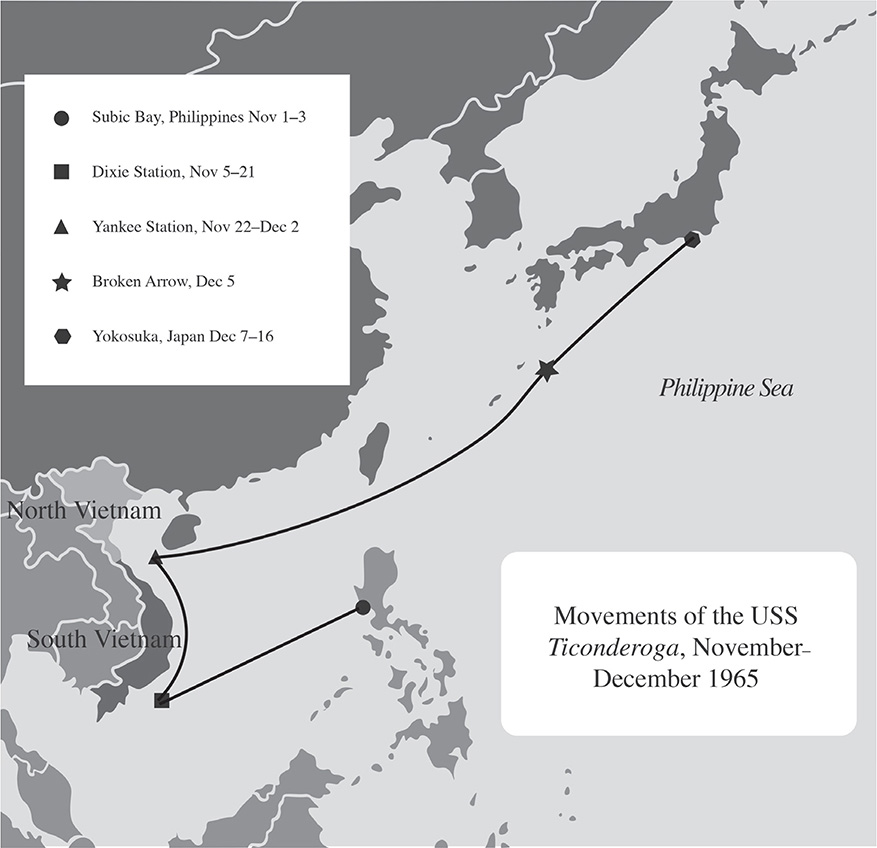
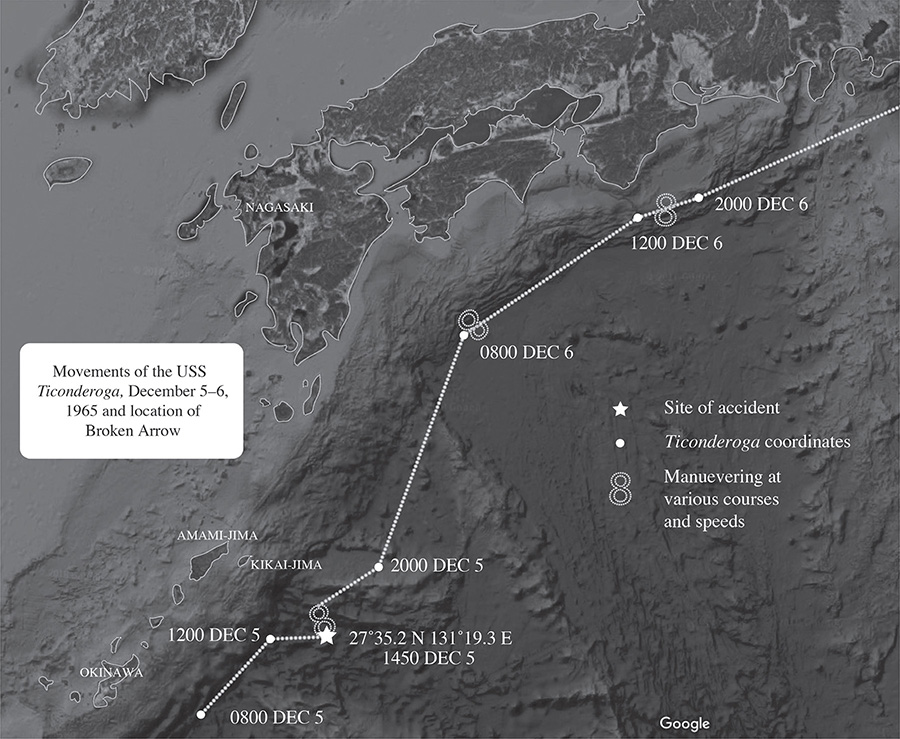
CHAPTER 1
Eve of Destruction
Sunday, December 5, 1965
En route Special Operations Area in the South China Sea to Yokosuka, Japan
Halfway through its second Vietnam tour, the 42,000-ton aircraft carrier USS Ticonderoga ploughed on through a blue-green sea towards Japan, leaving behind the war. After ten days on the line on Yankee Station, the carrier operating area off North Vietnam, and sixteen days on Dixie Station, its southern counterpart, the crew of just under 3,000 sailors and airmen were looking forward to a few days rest and recreation in Yokosuka, south of Tokyo.

